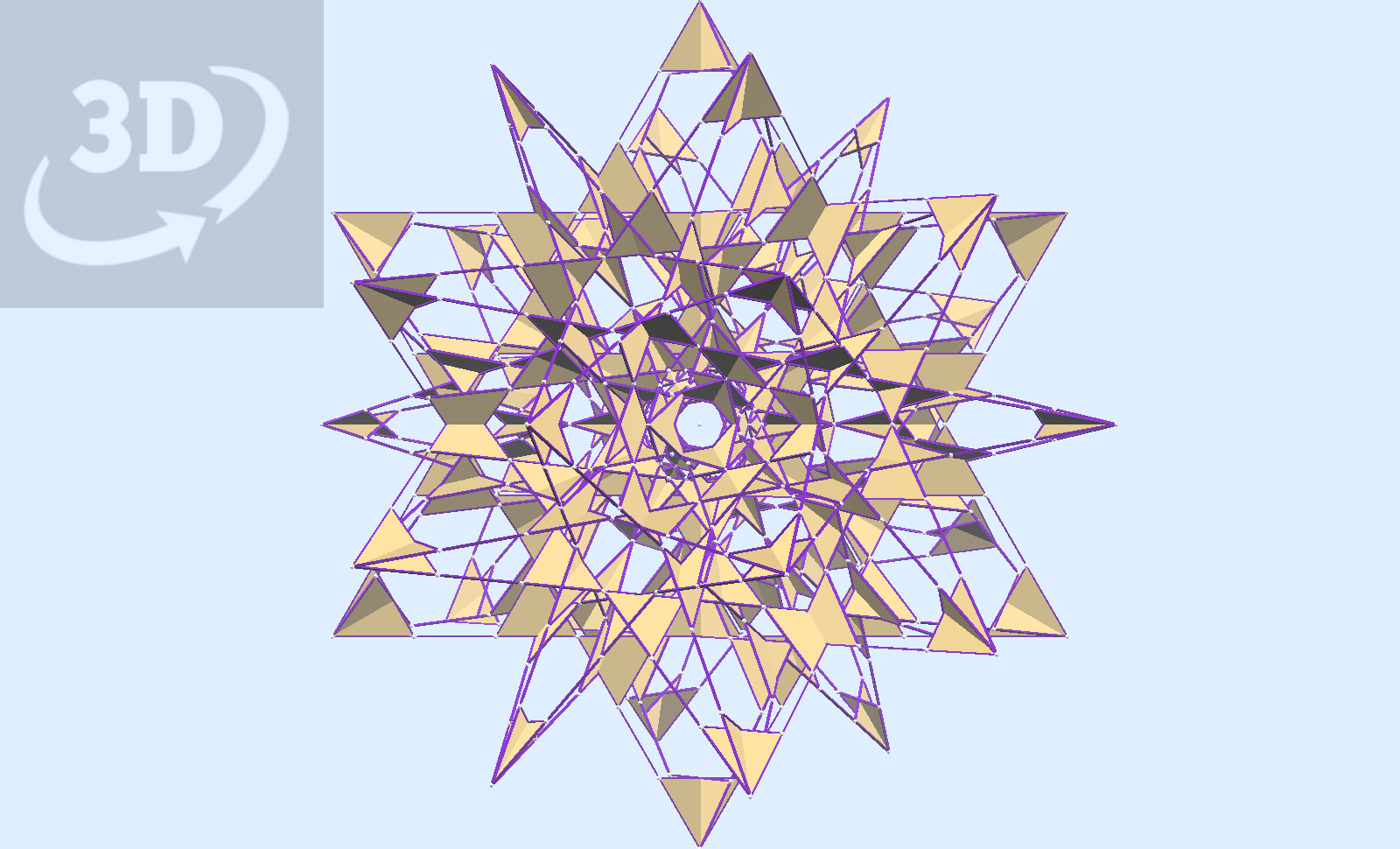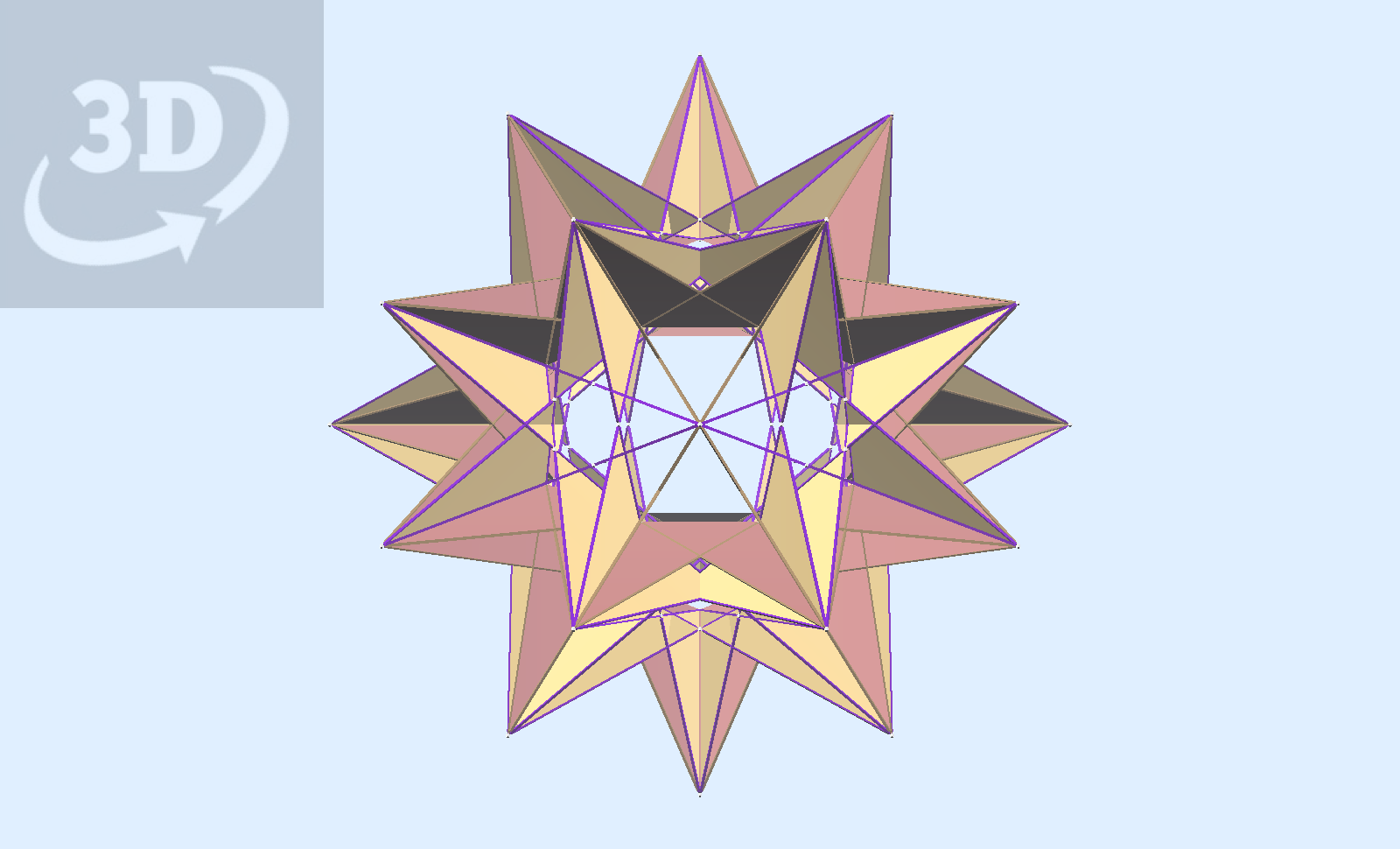This is a study of intersecting planes. It is a continuation of Intersecting Planes Part 1. This part is focused on six and ten planar interlinked polygons and expansions.
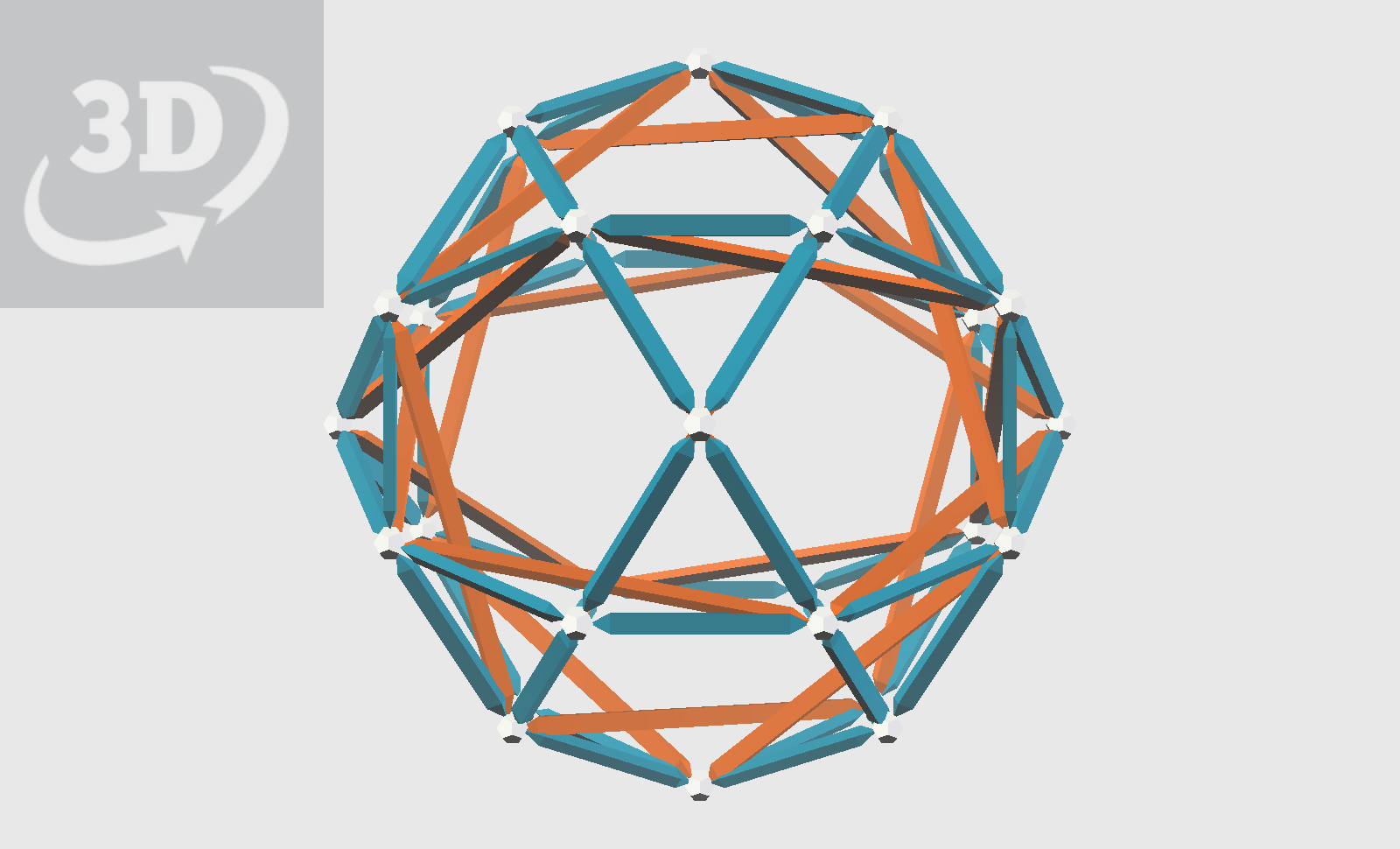
In the model above, six pentagons are interlinked. Analogously to how four interlinked triangles are chords of a Cuboctahedron, these pentagons are chords of an Icosidodecahedron. In the model below, the pentagons are doubled with an alternate set, and then the lines are extended, forming a stellation.


In the above model, the previous model is extended to a further stellation, and then paneled.
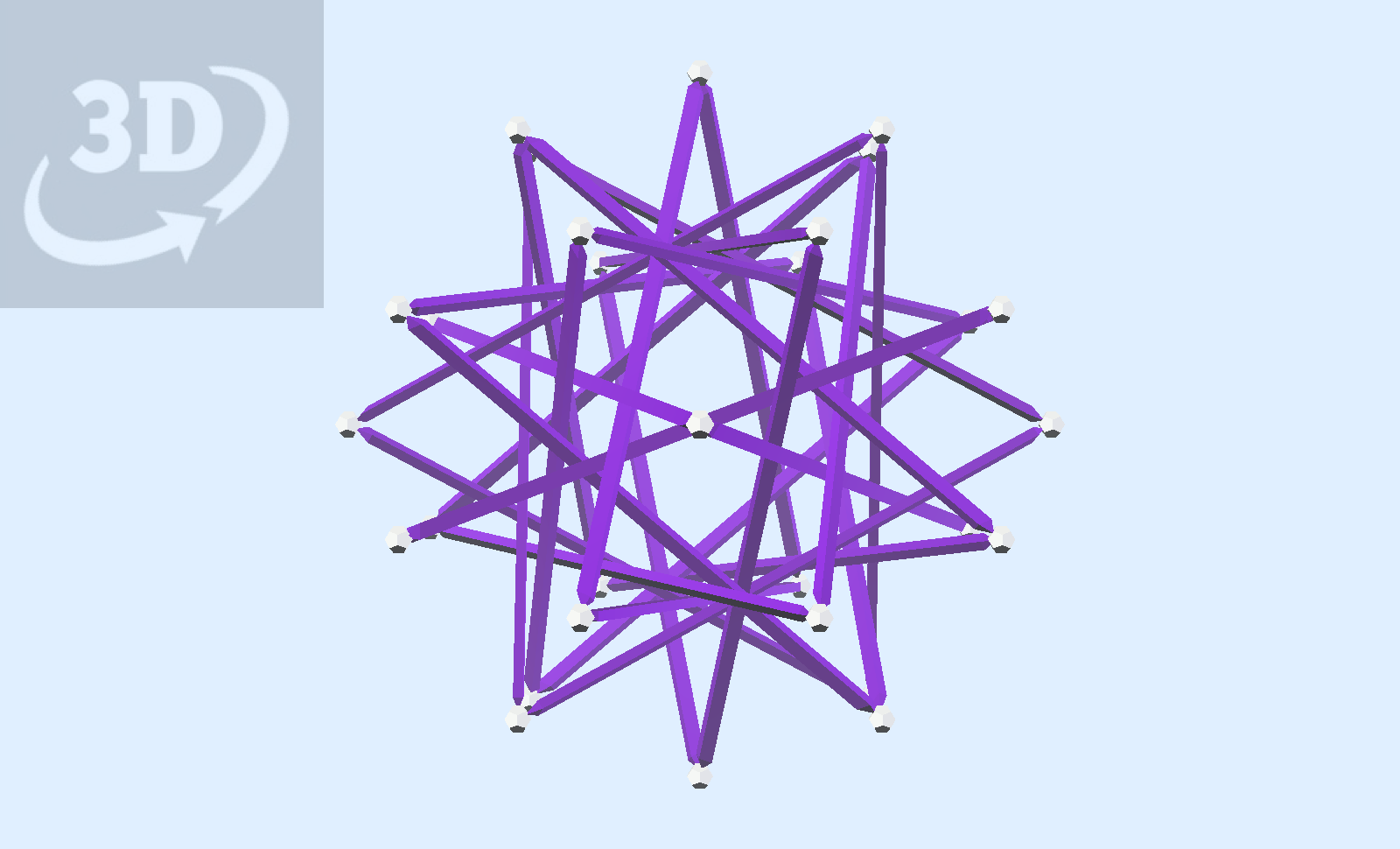
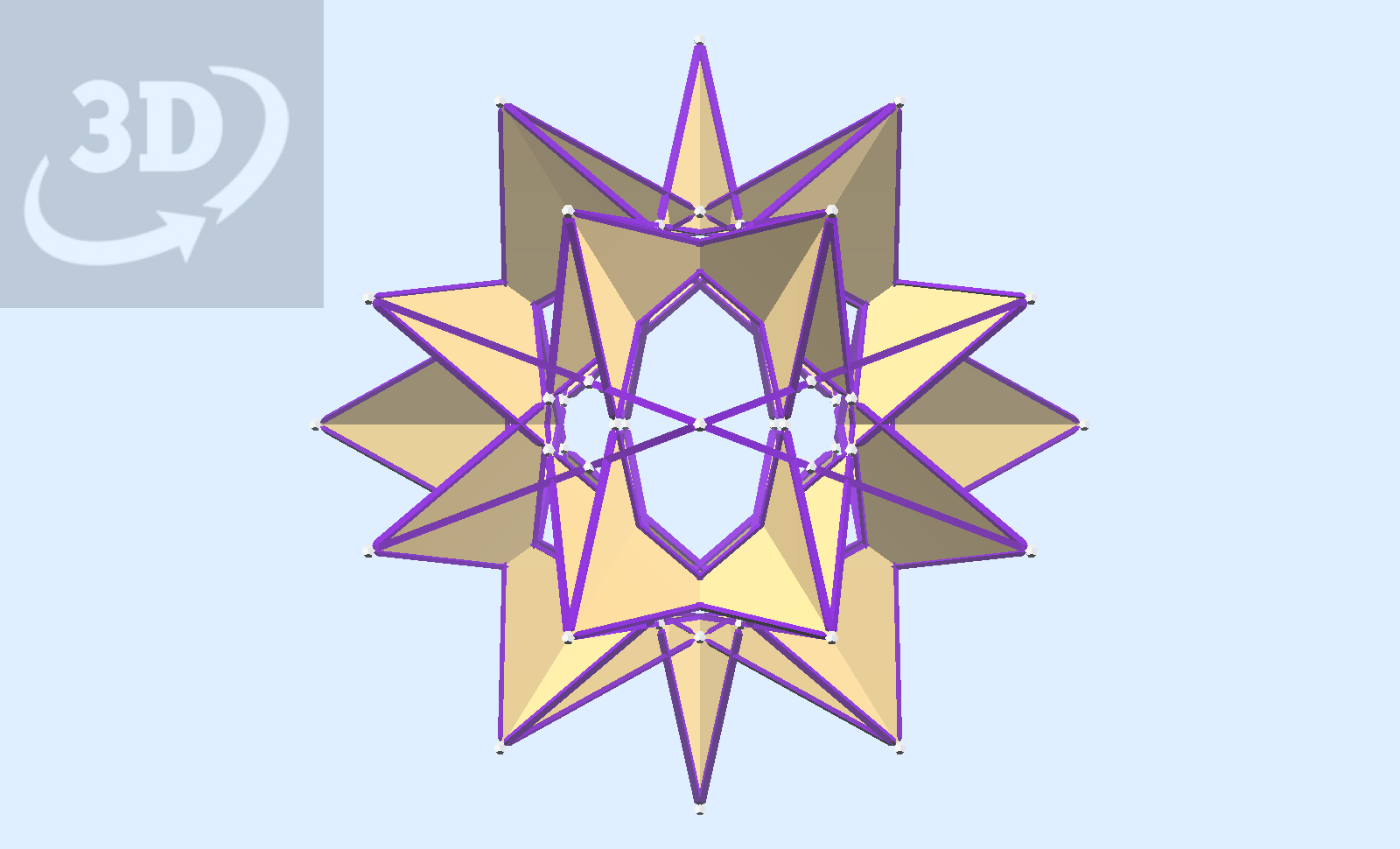
In the same manner as with four and six plane compositions, the ten triangles are doubled, forming a star. This is also a set of chords of an Icosidodecahedron, though its edges are not delineated.
